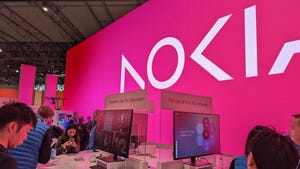Telstra spends big in latest Australian 5G auction
Australia has auctioned off spectrum in the 3.4 GHz and 3.7 GHz bands netting almost A$722 million (or US$474 million) for government coffers.
November 24, 2023

Incumbent Telstra emerged as the biggest winner, picking up frequencies in both bands and committing to a total spend of A$545.6 million.
The operator was quick to share its joy, detailing its plans to use the spectrum to boost its 5G offering throughout Australia, highlighting in particular the 80 MHz of frequencies it acquired in the major metropolitan areas of Sydney and Melbourne.
In addition, “it’s particularly pleasing that we’ve also secured a significant amount of spectrum covering large parts of regional Australia,” said Telstra CEO Vicki Brady. “This will mean that even more customers in more places will enjoy our world-leading 5G network.”
In all, Tesltra secured between 55 MHz and 110 MHz of new spectrum in most markets in Australia, or as it said itself, “a large proportion of the available spectrum;” that translates to 326 lots out of 588 available, of which 574 were actually allocated.
However, rival operators TPG Telecom and Optus also bought frequencies, as did state-owned broadband network operator NBN Co.
NBN Co picked up 200 lots of spectrum but racked up the smallest bill at just A$14.4 million. It has yet to comment on the award, but presumably has acquired frequencies that will support its ongoing fixed wireless access (FWA) push.
TPG, bidding via its Mobile JV unit, agreed to pay A$128.2 million for 44 spectrum lots in the 3.7 GHz band, covering metropolitan and regional areas.
“Once deployed, this spectrum will deliver a huge capacity boost for our 5G mobile and fixed wireless services, providing greater speeds and better performance for new and existing consumer and business customers,” noted TPG Telecom’s CEO Iñaki Berroeta.
Meanwhile, Optus, which hasn’t had a lot to say on the matter, grabbed four lots of spectrum for A$33.5 million.
“The outcomes of the allocation process align strongly with our objectives,” said Nerida O’Loughlin, chair of the Australian Communications and Media Authority (ACMA), which carried out the auction.
Clearly those objectives included making the most money possible for the state. O’Loughlin didn’t put it quite like that though, of course: “The revenue raised reflects the market value placed on this spectrum as a valuable public asset,” she said.
That statement seems to run counter to Telstra’s comment that it gained its new spectrum “at a highly competitive price.”
But if both sides are happy, who are we to nitpick?
In the main, the ACMA talked up the usual benefits of the award of new frequencies for mobile.
“The allocation of this spectrum will support digital connectivity, promote competition and facilitate investment in new services for Australian consumers and businesses across metropolitan and regional areas of Australia,” O’Loughlin said.
The regulator and the telcos find themselves on the same side, then, in their public comments about the new airwaves, at least.
About the Author(s)
You May Also Like











_1.jpg?width=300&auto=webp&quality=80&disable=upscale)


.png?width=800&auto=webp&quality=80&disable=upscale)